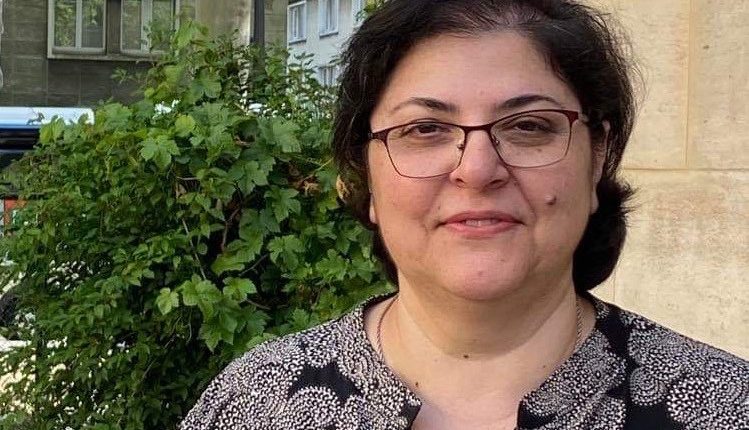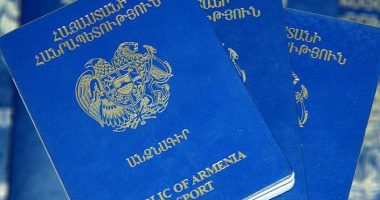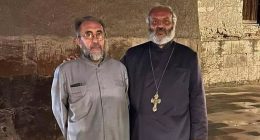Interview with Armenian Art Historian Anna Leyloyan-Yekmalyan, Lecturer at INALCO and Director of ‘Maison des Etudiants Armeniens’ at La Cite Universitaire de Paris.
In an October 3rd interview on British television, to defend himself from a question by BBC journalist Stephen Sacku relating to UN Security council resolution, Armenian PM pointed out to the ‘millennial’ presence of Armenians in Nagorno-Karabakh. This includes the presence of many cultural sites in the region. Could you describe more precisely what he refers to in terms of cultural sites? Who takes care of the historical sites as of today?
As you mentioned, this historical presence is attested by thousands of monuments (fortresses, monasteries, churches, chapels, khatchkar, commemorative cross-stone, historical cemeteries, bridges, fountains) which are covered with presence-testifying Armenian inscriptions. The soviet leadership separated the Nagorno-Karabakh from Armenia by creating an autonomous region attached to Azerbaijan. In this context, a majority of these monuments have been subject to programmed and methodical destructions by Azerbaijani Soviet authorities, or, in the better case, left abandoned due to the anti-religious ideology of the Soviet regime, hence condemning them to inevitable destructions. Then, in 1988, when the population of Nagorno-Karabakh asked to be reintegrated to Armenia, a majority of the Armenian monuments in Nagorno-Karabakh fell into ruins or advanced state of degradation.
We can therefore wonder how, after such barbarity and willingness to annihilate, there still remains Armenian monuments today in Artsakh? This can be explained by the rich spiritual and cultural heritage created for thousands of years by Armenians living in Artsakh, so rich that even decades of destructions under Soviet Azerbaijani rule have not impacted the essential part of this rich heritage. Braving the prohibitions, Armenians never gave up on their language, religion and culture. The countless monuments testify their millennial presence on their ancestor’s land. They are still constituting today an inestimable historical and cultural worth, but for people of Artsakh, they are first and foremost of vital and existential value.
The Armenian Cultural Heritage plays an important role in this ethnic conflict. The war creates a dangerous situation for such sites be damaged by military strikes. Are there examples of attacks against Armenian sites that have occurred before the conflict, or, only examples of collateral damages inside the conflict?
Unfortunately, since the beginning of the conflict in 1988, Armenian cultural and spiritual sites are considered as targets, for example in the recent case of the bombing of Shushi on Oct 8. Indeed, all war-like situations on the territory put an inevitable danger on these vital and cultural infrastructures. But in this case, it is a mean for Azerbaijan to implement a policy of deletion of the Armenian cultural heritage, adding to the ethnic cleansing and total annihilation of the Armenian presence in the region. What we are seeing today is we are facing a cultural genocide!
After ethnic cleansing of the Armenian population in Azerbaijan, Baku employs itself to cleanse the memory of Armenian presence, by attacking not only the population but also all traces of its culture, its history and its religion. Let’s not forget that many Armenian sites have been destroyed and wiped out in the 1990s as in 2020 by the same policies of the same Azerbaijani government, for example, the old Cemetery in the autonomous republic of Nakhidjevan. Out of the 3,000 medieval Khatchkars listed in 1976 on this site, less than a thousand remained by the end of the 1990s, and between 2000 and 2005 have been subject to systematic destruction by Azeri army, under the supervision of the Azerbaijani authorities
With the conflict’s escalation, some newspapers reported the important degradation of the Saint Savior Cathedral in Shushi on October 8. This is I believe an important monument, so is it the first time that this church has been targeted? How is this monument made symbolic in the latest round of hostilities, and before, for Armenians living there?
As explained, the Azeri army methodically targets these historical as well as cultural sites, especially religious ones. There are multiple examples of this, like on October 8, 2020, an Azeri strike targeted the Saint-Savior Ghazanchetsots Armenian Cathedral in Shushi. There are considerable damages as two high-precision Azeri missiles stroke one of the Cathedral’s four apses’ cupola. This is not the first time and let me tell you the history of this church. This magnificent cathedral built between 1868 and 1887 was disaffected following the 1920 anti-Armenian pogroms in Shushi, also called the Shushi massacre. It served then as granary and garage, and between 1989 and 1992 weapons were stocked there by the Azerbaijani army before being greatly damaged in the Nagorno-Karabakh war. She was fully restored by 1998 and became the center of the Archdiocese of the Armenian Church in Artsakh. The cathedral is listed in the list of historical and cultural monuments of the City of Shushi. It is a flagship monument of Artsakh, symbol of hope, peace, renewal and renaissance, all the values that Azeri attack. The strike on the morning of October 8 was not coincidental. Unfortunately, the list goes on. Since 1991, when Nagorno-Karabakh proclaimed itself independent, and particularly after the ceasefire of 1994, there was methodical restoration of cultural, religious and historical sites. Today, the process of mass destruction of architectural jewels belonging to Armenian culture in Nagorno-Karabakh is relaunched by Azerbaijan.
Considering the important task of preserving the Armenian heritage, and considering the damage that such monuments could endure in short and medium term, what realistic solutions can be brought to better manage this heritage? Should the solution consider prevailing destructions by extracting any mobile pieces from the hostile milieu, or, should it be integrated as part of a diplomatic solution?
It’s a question to which finding an answer is difficult: As mentioned, these objects represent first and foremost historical evidence testifying the continuous presence of Armenians on this land. Remote from their environment, they will lose the strongest significance signaled by their very presence, but prior hand, such a move would represent such cultural cleansing that it would erase all Armenian presence in the territory. It is our duty to protect all that can possibly be protected before beginning the stage of reconstruction and Restoration, as occurs after every war.
Interviewed and translate from French to English by Charles Fourmi










